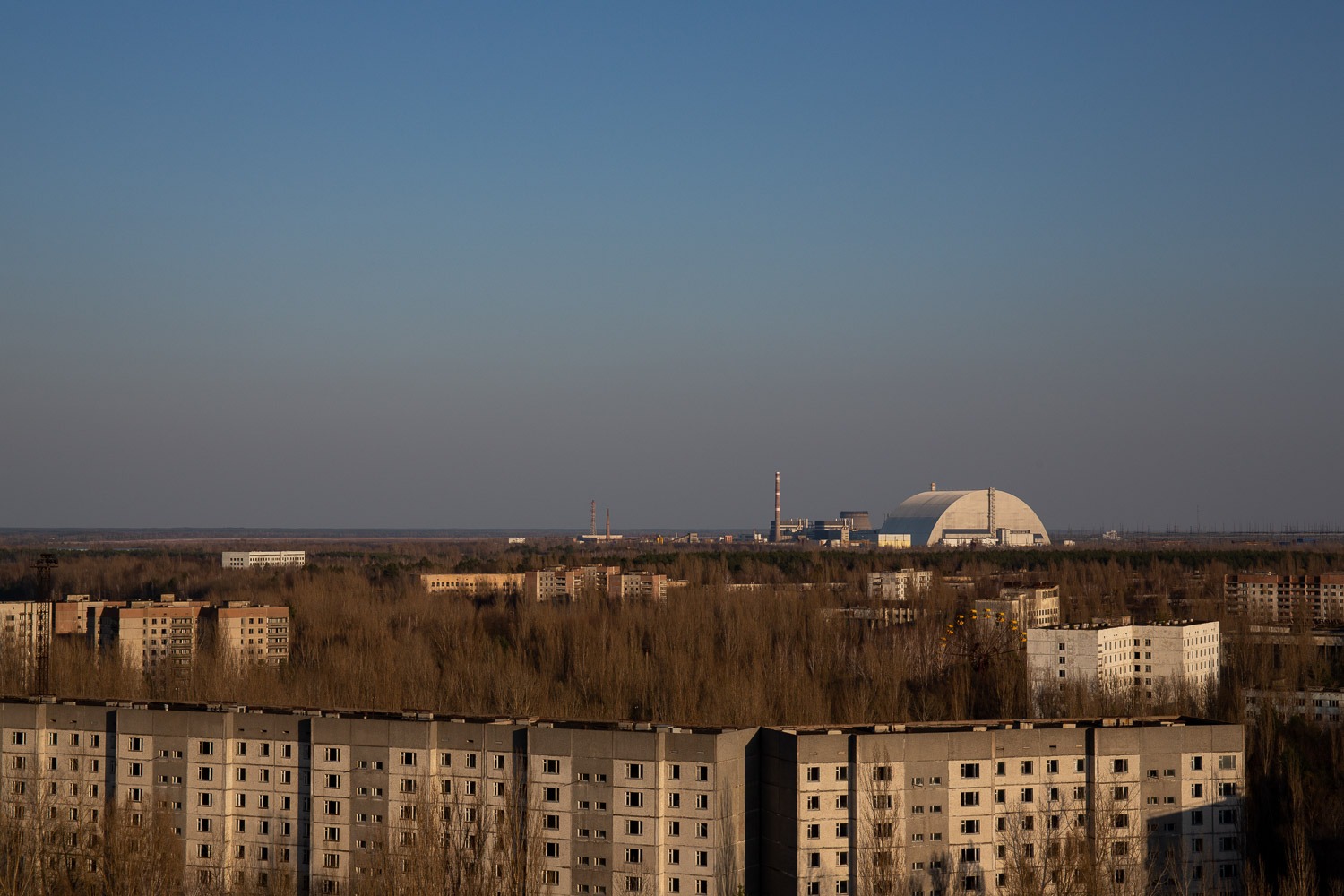Pripyat Tower Blocks
Pripyat city was designed and built to house the young and growing population of workers at the nearby Nuclear Power Plant. Its presence was close by on the outskirts of the city. In April 1986 the disaster at the power plant resulted in all the inhabitants being evacuated and the city being abandoned. the tower blocks remain, cleaned by the liquidators but slowly decaying and crumbling.
Things have changed in Chornobyl since this was written. Hopefully, one-day peace will return and visiting this special region of Ukraine will be possible.

Key points
- The tower blocks in Pripyat can no longer be entered as they are collapsing
- The ground-floor windows and doors do however provide an insight into the lives of those who lived in these blocks
- Personal belongings either missed or left by the liquidators remain
- These are some of the few places within the Exclusion Zone where it feels like you are intruding on people’s lives
Abandoned tower blocks
Pripyat is now empty. It was once the model town for workers at the newly developed and expanding nuclear power plant. There were just 4 tower blocks of 16 storeys built when the disaster occurred.
From the roof of one block, it is easy to see why this city was so badly affected when the power station disaster occurred. The remains of the reactor are now covered in a metal sarcophagus, containing the radiation still being emitted, but it is close to the city. This proximity really isn’t evident until you are stood on the rooftop looking at the buildings, the Ferris wheel and the river beyond.

The apartments within the tower block are now empty. The liquidators who risked their own lives to clear the city made sure that very little remained. Doors have been removed to make life a little easier to remove furniture quickly and all that is left is the random cooker and small, personal belongings missed by the rapid clearances.
Liquidators in Pripyat
The liquidators were army personnel and specialists brought in during the months that followed the disaster. With very little protection and for some, little awareness of the risks they were working under they attempted to reduce the consequences of the disaster. Numbers are difficult to find but it is estimated that between 600000 and 800000 people were involved in the process. Many now suffer from lifelong illness and shortened life expectancy.
Radioactive dust within the city was one of the problems (and still is today) that needed to be reduced. Streets and buildings were washed down with a substance called “bourda” and in areas such as Kopachi and the Red Forest, buildings and trees were buried in an attempt to contain the dust. The Red Forest is adjacent to the Chornobyl Nuclear Power Plant and all the pine trees were burnt by the radiation turning red and yellow giving the area its name. The trees contained such high levels of radiation following the disaster that the only solution at the time was to cut the trees down and bury them before the clear-up to contain the dust could begin. The Red Forest Area, despite its natural and flourishing appearance today with new young trees, is still one of the most contaminated areas within the exclusion zone.
Pripyat tower blocks today
Entering this very personal world was difficult. Looking through windows into someone’s home, it felt as if you weren’t really meant to be there. It was hard to imagine the emotions that the residents felt being given a few hours to collect a small number of belongings. They were told it would be for just a few days, but history tells us otherwise. Standing on the rooftop in the afternoon sunshine it is also hard to comprehend the task that liquidators were faced with; a vast city coated in radioactive dust and debris that needed to be reduced.
The lift in the block no longer works and glass and debris crunch underfoot with every step. Walls have collapsed and doors that were once the pride of the homeowners hang off their hinges. The ornate leather padding is torn and shabby. It is impossible to imagine what the residents’ lives, the tower block and the city would have been like today had the disaster not happened.












Photography notes
Since 2016 it has not been possible to enter the tower blocks in Pripyat. There is however plenty of places where looking through windows and doorways provides an insight into the lives of those who lived in the city.
Personal belongings and items of everyday life tell the story of the individuals who made this city their home. Just wandering and looking will provide photographic opportunities. In a similar way to other buildings, using a longer lens will allow you to photograph objects inside the buildings without breaching any safety rules or putting yourself at risk.
Getting to Pripyat
Pripyat is located within the Exclusion Zone, put in place after the nuclear disaster at the nearby power plant and is about 2 hours by road from Kyiv.
Visits to Chornobyl are only possible as part of a guided tour of the Chornobyl Exclusion Zone. These tours can be booked in advance and all depart from Kyiv.